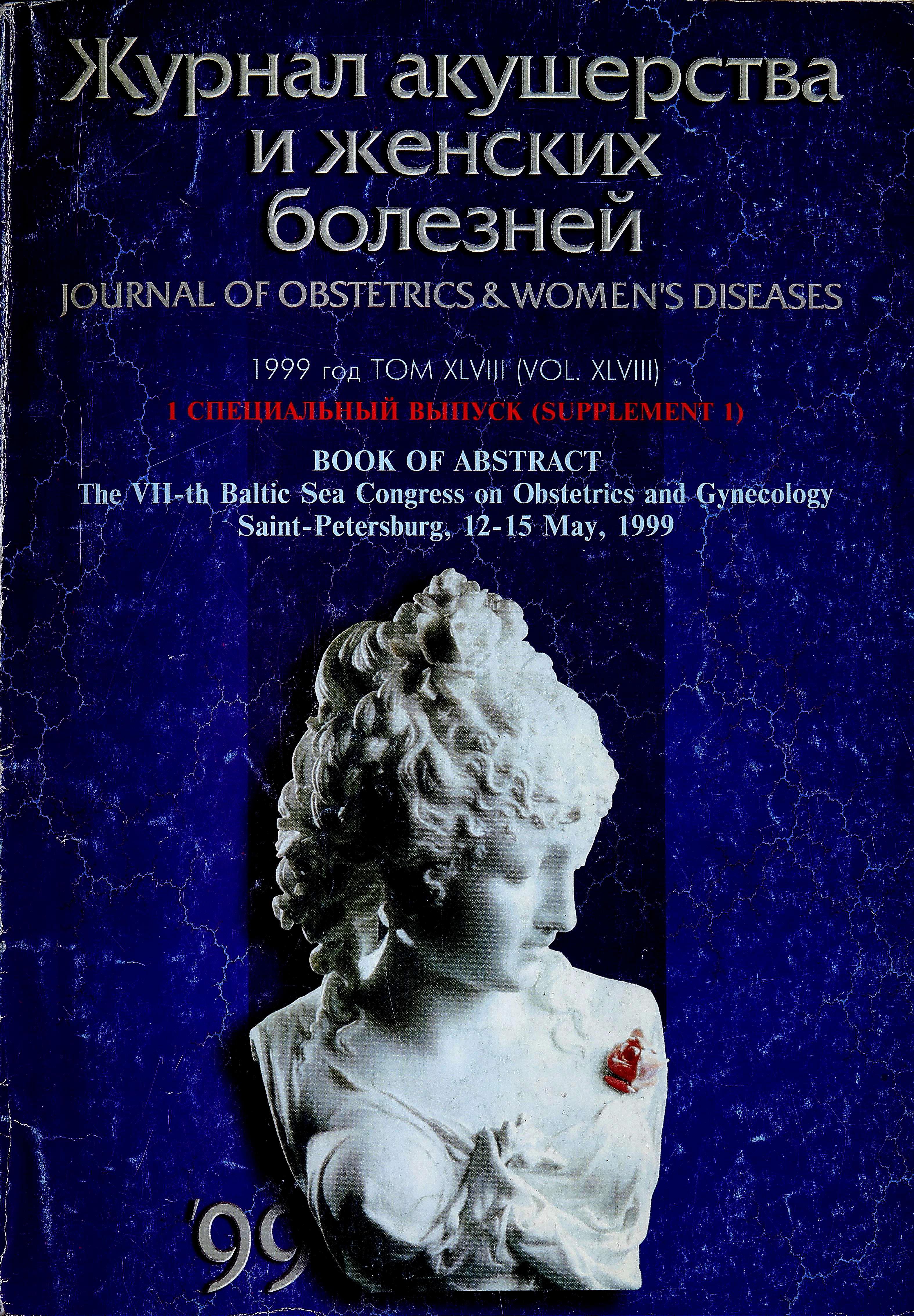The neonatal urgent care system in St. Petersburg
- Authors: Ljubimenco V.A.1, Simachodski A.S.1, Kogan A.V.1
-
Affiliations:
- Children's Hospital No. 1
- Issue: Vol 48, No 5S (1999)
- Pages: 104-104
- Section: Articles
- Submitted: 19.02.2022
- Accepted: 19.02.2022
- Published: 15.12.1999
- URL: https://journals.eco-vector.com/jowd/article/view/101157
- DOI: https://doi.org/10.17816/JOWD101157
- ID: 101157
Cite item
Full Text
Abstract
The creation of modern neonatal urgent care (NUC) system of St-Petersburg was stared in 1978, when she first neonatal intensive care unit was opened in Children’s Hospital #1. Simultaneously, specialized ambulance sub-station #20 was organized, including resuscitative-consulting neonatal teams (RCNT).
Full Text
The creation of modern neonatal urgent care (NUC) system of St-Petersburg was stared in 1978, when she first neonatal intensive care unit was opened in Children ’s Hospital #1. Simultaneously, specialized ambulance sub-station #20 was organized, including resuscitative-consulting neonatal teams (RCNT).
Except that, in 1985 within the structure of this specialized ambulance #20 we opened the resuscitative-consulting center (NRCC) and by this way got the ability of neonatal, so called, dangerous conditions (DC) monitoring.
At early 90s the creation of modem hospital resources was started:
-the total bed's capacity of city NICU’s increased from 12 to 66
-staff normatives in NICU were changed (1 nurse for such patient, one medical doctor for 3 patients)
-NICU’s were supplied by appropriate medical equipment
- modern education of NICU personnel (MD’s and Nurses) was made widely including modem neonatal technologies and strategies.
In combination of early evaluation of DC in maternity houses (NRCC) and previously organized neonatal transportation system we got the possibility to change significantly the situation in St. Petersburg.
The great majority (up to 90%) of the sickest neonates are transferred to hospitals during first day of life, and abilities of diagnosis and treatment in the hospital are significantly higher comparing with maternities. The system of NUC gives us the possibilities of putting the concrete situation with each extremely sick neonatal patient and the whole situation in the city under control. All this gives the opportunity to establish the rational management of whole system by City Committee of Health Care. As the result the survival rate increased significantly, at the same time the amount of disabled children, survived after neonatal critical conditions, decreased. The mortality rate in NICU’s decreased by two times, early neonatal mortality rate by three times, neonatal mortality rate by 2,6 times, and infant mortality rate by 1,8 times. Neonatal mortality rate in Maternity Houses decreased down to 1% and was almost always connected with non-viable congenital heart malformations.
Further development of NUC is connected with development and using of prospective modern technologies such as synchronized IMV, high frequency oscillatory ventilation, nitric oxide therapy, using of surfactant, intravenous immunoglobulins, ECMO, antenatal evaluation of congenital heart malformation, decreasing the number of neonates of other non-viable malformation, development of neonatal neurosurgery.
About the authors
V. A. Ljubimenco
Children's Hospital No. 1
Author for correspondence.
Email: info@eco-vector.com
Russian Federation, St. Petersburg
A. S. Simachodski
Children's Hospital No. 1
Email: info@eco-vector.com
Russian Federation, St. Petersburg
A. V. Kogan
Children's Hospital No. 1
Email: info@eco-vector.com
Russian Federation, St. Petersburg
References
Supplementary files







